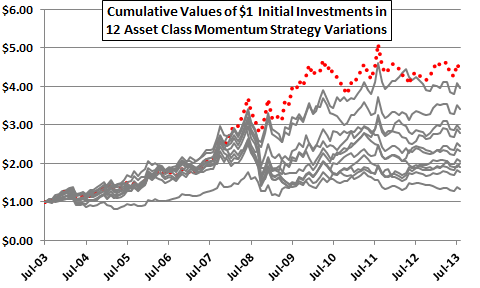Book Preview – Chapter 5
December 20, 2013 - Big Ideas
Here is this Friday’s installment of Avoiding Investment Strategy Flame-outs, a short book we are previewing for subscribers. Chapter previews will continue for the next four Fridays.
Chapter 5: “Checking for Market Adaptation”
“The market is a complex system with many interacting parts, and external influences. As in other social settings, there are two aspects to market evolution: (1) adaptation to changes in external influences; and, (2) adaptation to adjust internal imbalances.
“External influences include economic forces, political shifts, monetary policies, regulatory initiatives and information technology enhancements. For example:
- Economic globalization broadens the universe of assets available in the market, but tends to increase co-movement of assets.
- Political shifts may favor one industry over another or affect portfolio-level after-tax profitability of investing.
- Loose monetary policy may favor the financial industry.
- Regulatory actions on broker fees, quote granularity, short selling and margin levels impact investment frictions (profitability of trading) and cash requirements (portfolio-level returns).
- Mass availability of historical data and investing knowledge, computing power, analysis software and real-time trading accelerate market identification of and response to all market opportunities.
“Investor adaptation to such influences is generally strategic.
“Some investors continuously strive to identify and exploit internal market imbalances (pricing anomalies) through fundamental and technical analysis, both asset-specific and marketwide. They express perceived imbalances in different ways, such as:
- Undervalued versus overvalued
- Overbought versus oversold
- Too fearful versus too complacent
- Risk-on versus risk-off
- Informed versus noise
“When many investors compete in exploiting an imbalance, they supply negative feedback that suppresses it. When more investors compete, suppression is faster. More generally and abstractly, acts of exploiting characteristics of an inferred distribution of investing returns change the distribution. (There is an extensive body of countering research that attributes perceived internal market “imbalances” to rational equilibriums based on actual, but sometimes subtle, risks. The counter-counter is a proposition that people are not even grossly rational, let alone subtly rational.)
“The following sections discuss ways to detect and deal with market adaptation.”
